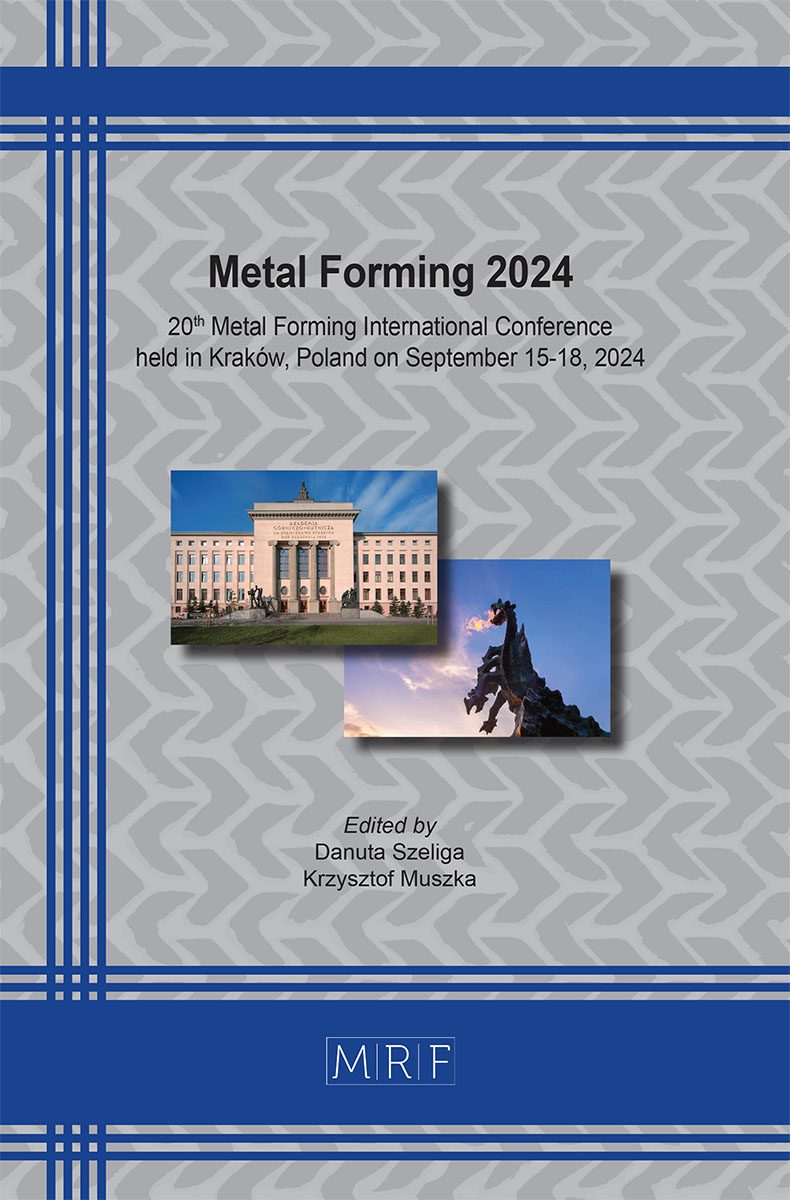–
Electroshock plastic constitutive modelling of high strength aluminum alloy based on GA-BP neural network
SONG Yanli, XU Hainan, CHEN Long, LU Jue, HUA Lin
download PDFAbstract. Electrically-assisted forming is an effective way to improve the difficult-to-form materials. On basis of electro- and magneto- plastic effects, our team put forward a novel electroshock treatment (EST) process, which can not only improve the formability of the material but also improve the service performance of the formed parts. However, electrically-assisted forming involves nonlinear deformation with multi-physics coupling, the microstructural evolution and plastic mechanical response of materials under the coupling of electric current field and stress field are highly intricate, posing significant challenges in predicting macroscopic deformation behavior. The study of the characterization and precise control of plastic deformation’s constitutive relation is therefore highly significant. In this work, the stress-strain curves of AA7075 under, different current densities, periods and power duration are obtained by means of the pulse electric current assisted tension test, and the intelligent prediction of the electroshock plastic constitutive relationship of AA7075 is realized based on the Genetic Algorithm (GA) optimized Back Propagation (BP) (GA-BP) neural network. The results show that the proposed algorithm can reduce the input parameters of the constitutive model to current, temperature and strain, and improve the computational efficiency. GA is used to optimize the initial weight and threshold of BP neural network, and the best hidden node number was selected as 12 by error verification to train the network. Compared with the traditional BP neural network, the neural network optimized by GA has higher accuracy, and in the plastic deformation stage, the coefficient of determination R2 between the predicted results and the experimental results is basically 99%, which is about 20% higher than that of the BP neural network. At the same time, it solves the data fluctuation in the long-term prediction due to the standard of satisfying the error in the prediction.
Keywords
7075 Aluminum Alloy, Genetic Algorithm, BP Neural Network, Electroshock Plastic Constitutive Model, Electrically-Assisted Forming
Published online 9/15/2024, 8 pages
Copyright © 2024 by the author(s)
Published under license by Materials Research Forum LLC., Millersville PA, USA
Citation: SONG Yanli, XU Hainan, CHEN Long, LU Jue, HUA Lin, Electroshock plastic constitutive modelling of high strength aluminum alloy based on GA-BP neural network, Materials Research Proceedings, Vol. 44, pp 503-510, 2024
DOI: https://doi.org/10.21741/9781644903254-54
The article was published as article 54 of the book Metal Forming 2024
![]() Content from this work may be used under the terms of the Creative Commons Attribution 3.0 license. Any further distribution of this work must maintain attribution to the author(s) and the title of the work, journal citation and DOI.
Content from this work may be used under the terms of the Creative Commons Attribution 3.0 license. Any further distribution of this work must maintain attribution to the author(s) and the title of the work, journal citation and DOI.
References
[1] S. Wang, A. Xiao, Y. Lin, Effect of induced pulse current on mechanical properties and microstructure of rolled 5052 aluminum alloy, J. Materials Characterization. 185 (2022) 111757. https://doi.org/10.1016/j.matchar.2022.111757
[2] Y. Song, C. Hao, Effect of Extremely Low Frequency Pulse Current Treatment on the Mechanical Properties of Al-Zn-Mg-Cu Aluminum Alloy, J. Mech. Eng. 58 (2022) 68-77. https://doi.org/10.3901/JME.2022.10.068
[3] H. Conrad, Thermally activated plastic flow of metals and ceramics with an electric field or current, Mater. Sci. Eng. A 322 (2002) 100-107. https://doi.org/10.1016/S0921-5093(01)01122-4
[4] C.D. Ross, T.J. Kronenberger, J.T. Roth, Effect of DC on the formability of Ti-6Al-4V, J. Eng. Mater. Tech.-Transactions of the ASME 131 (2009). https://doi.org/10.1115/1.3078307
[5] P. Wan, H. Zou, K. Wang, Research on hot deformation behavior of Zr-4 alloy based on PSO-BP artificial neural network, J. Alloy. Compd. 826 (2020) 154047. https://doi.org/10.1016/j.jallcom.2020.154047
[6] G. Yu, X. Bao, X. Xu, Constitutive modeling of Ta-rich particle reinforced Zr-based bulk metallic composites in the supercooled liquid region by using evolutionary artificial neural network, J. Alloy. Compd. 938 (2023) 168488. https://doi.org/10.1016/j.jallcom.2022.168488
[7] R. Chen, J. Song, M. Xu, Prediction of the corrosion depth of oil wel cement corrdded by carbon dioxide using GA-BP neural network, Constr. Build. Mater. 394 (2023) 132127. https://doi.org/10.1016/j.conbuildmat.2023.132127
[8] J. Shi, J. Wang, D.D. Macdonald, Prediction of primary water stress corrosion crack growth rates in Alloy 600 using artificial neural networks, Corros. Sci. 92 (2015) 217-227. https://doi.org/10.1016/j.corsci.2014.12.007
[9] K.G. Srinivasa, K.R. Venugopal, L.M. Patnaik, A self-adaptive migration model genetic algorithm for data mining applications, Inform. Sci. 177 (2007) 4295-4313. https://doi.org/10.1016/j.ins.2007.05.008
[10] Y. Zhou, S. Li, BP neural network modeling with sensitivity analysis on monotonicity based Spearman coefficient, Chemometr. Intell. Lab. 200 (2020) 103977. https://doi.org/10.1016/j.chemolab.2020.103977












